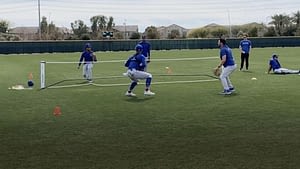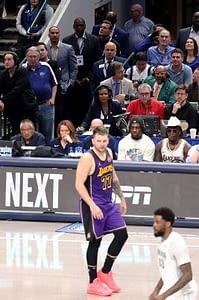The Torpedo Bat: A New Era or Just a Fad?
At 1:54 ET on a seemingly ordinary Saturday afternoon, the New York Yankees’ play-by-play announcer, Michael Kay, set off a chain reaction that could either revolutionize baseball or become one of its most peculiar episodes. During spring training, Kay had been informed by someone within the Yankees organization that the team’s analytics department had advised players on where pitches typically struck their bats. With this insight, bats were crafted to optimize those contact points, and some players embraced the idea.
Before the Yankees’ home game against the Brewers, Kay shared this intriguing tidbit with the YES Network production team, suggesting they keep an eye out for an opportunity to showcase these specially designed bats. The Yankees then proceeded to hit four home runs in the first inning, and the camera zoomed in on Jazz Chisholm Jr.’s bat in the second inning. “You see the shape of Chisholm’s bat…” Kay remarked on air. “It’s got a big barrel on it,” Paul O’Neill chimed in, as Kay elaborated on the analysis behind the torpedo-shaped bat.
Chisholm singled to left field, and Anthony Volpe, after working the count against former teammate Nestor Cortes to a full count, launched a home run to right field using the same type of bat. A reporter watching the game texted Kay, asking if Volpe had hit the “meat part” of the bat Kay had mentioned. Kay confirmed, and within an hour, the video of Chisholm’s bat and Kay’s exchange with O’Neill was circulating widely on social media, gaining momentum with each share.
In a time when batting averages are at historic lows and strikeout rates are soaring, the Yankees’ explosive performance with these unusual bats seemed like a beacon of hope for hitters everywhere. From professional players to Little Leaguers, and even a member of Congress, everyone was eager to get their hands on these new bats. Bat manufacturers were inundated with orders, and one bat salesman reportedly asked his boss, “What the heck have we done?”
Jared Smith, CEO of bat-maker Victus, commented, “I’ve been making bats for 15, 16 years. … This is the most talked-about thing in the industry since I started. And I hope we can make better-performing bats that work for players.”
Bobby Hillerich, vice president of production at Hillerich & Bradsby, noted that his company had produced 20 versions of the torpedo bat as of that Saturday, and within a week, that number had tripled as players and teams placed their orders.
The Evolution of the Torpedo Bat
While the torpedo bat made its mainstream debut on that Saturday, it had been around for a while. Hillerich & Bradsby first encountered the design in 2021, referring to it as the “bowling pin” bat. The Cubs’ Nico Hoerner was the first major leaguer to try it, though he wasn’t comfortable with it. Cody Bellinger also experimented with it before joining the Yankees.
Braves catcher Drake Baldwin recalled trying one in the Arizona Fall League, noting its unusual appearance. Mets shortstop Francisco Lindor used it in 2024, finishing second in the NL MVP voting. Giancarlo Stanton swung one during his playoff surge last fall, but the media didn’t notice, possibly due to the bat’s pitch-black color.
Minnesota manager Rocco Baldelli encountered one in the Twins’ dugout during spring training and was intrigued by its shape. “What the hell is this thing?” he asked, wondering if it was legal. Assured that it was, he put it back down.
Widespread Adoption and Skepticism
On Opening Day, eight teams had some version of the torpedo bat in their stock. But after the Yankees’ home run spree, demand skyrocketed. Kevin Uhrhan, pro bat sales rep for Louisville Slugger, was inundated with requests. Yankees hitting coach James Rowson received about 100 text inquiries. Everyone wanted to know about the bat; everyone wanted one.
- Braves players in San Diego asked about the bats, and by Sunday morning, the team placed an order.
- By midweek, all 30 teams had requested the bats.
- Victus made the bats used by Chisholm and Volpe available for retail.
Even a member of Congress reached out to Louisville Slugger. The Cincinnati Reds requested a visit from Hillerich & Bradsby, and Reds star Elly De La Cruz used a torpedo bat for a career performance that night.
Despite the excitement, some players remained skeptical. White Sox outfielder Andrew Benintendi said, “I’ve used the same bat for nine years, so I think I’ll stick with that.” Eric Hosmer likened the process to customizing golf clubs, suggesting that hitting coaches might consider which bat is most effective against specific pitchers.
Yankees manager Aaron Boone downplayed the impact, saying, “You’re just trying to just get what you can on the margins, move the needle a little bit. And that’s really all you’re going to do.”
Reliever Adam Ottavino observed, “It’s the Yankees and they scored a million runs in the first few games, and it’s cool to hate the Yankees and it’s cool to look for the bogeyman.”
Baseball evolves slowly, but the torpedo bat could be a transformative moment, highlighting the potential for more precisely designed bats. Or it could be a fleeting reaction to an extraordinary day of home runs against a struggling pitching staff.
As the dust settles, the question remains: Is it the hitter or the bat?
Originally Written by: Buster Olney





















